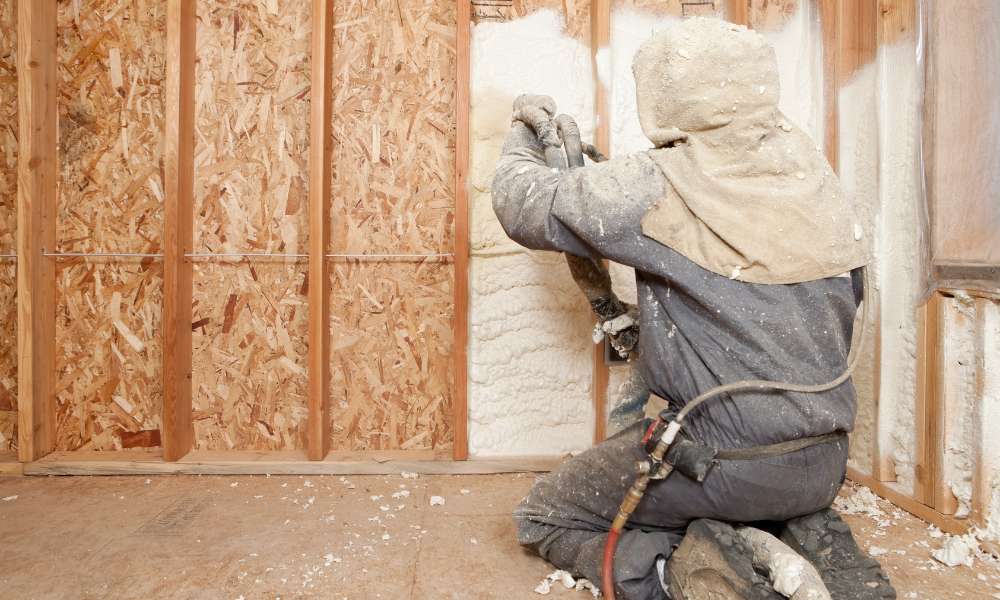Spray insulation in existing walls is a cost-effective and efficient method to enhance your home’s energy efficiency and comfort. This process involves injecting insulation materials into the walls, ensuring that every nook and cranny is sealed, which reduces energy loss and lowers utility bills. The primary benefit of spraying insulation in existing walls is its ability to significantly improve thermal performance without requiring extensive renovations. It is crucial to choose the right insulation type and ensure proper installation to maximize these benefits. Homeowners can undertake this project with the right guidance, making it a practical and valuable home improvement investment.
Do I Need To Prepare My Walls Before Installing Spray Foam Insulation?
Yes, it is important to properly prepare your walls before installing spray foam insulation. This typically involves cleaning the surface of the walls to remove any dirt, dust, or debris that could interfere with the adhesion of the cushioning. It is also recommended to seal any gaps or cracks in the walls to prevent air leaks and ensure a more effective cushioning application.
Understanding Existing Wall Insulation
To enhance the energy efficiency of a home, understanding the existing wall insulation is crucial. One popular method for improving insulation in existing walls is through the installation of spray foam insulation. This innovative technique involves injecting expanding polyurethane foam into wall cavities, creating a seamless barrier that helps prevent heat loss and air infiltration. By filling gaps and voids that traditional cushioning materials may miss, spray foam can significantly improve the overall thermal performance of a structure.
Assessing The Situation
Before beginning the process of spraying in existing walls, it is essential to assess the current state of your walls. This includes identifying any gaps, cracks, or areas where insulation is lacking. A thorough inspection can reveal issues such as drafts, moisture problems, or previous cushioning that has settled over time. Understanding the condition of your walls will help you determine the amount of spray cushioning needed and identify any preliminary repairs required. This step is crucial for ensuring the effectiveness and longevity of the insulation.
Choosing The Right Insulation
Selecting the appropriate insulation material is crucial for achieving optimal results. When it comes to spraying cushioning in existing barricades, two main types are commonly used: closed-cell foam and open-cell foam. Closed-cell foam offers higher R-values and greater structural stability, making it ideal for areas with limited space or moisture concerns. Open-cell foam, on the other hand, provides excellent soundproofing properties and is more cost-effective.
Preparing The Walls
Proper preparation of the walls is a vital step when learning spraying cushioning in existing barricades. Start by cleaning the surfaces to remove any dust, debris, or old cushioning remnants. This ensures better adhesion and coverage of the new cushioning. Next, seal any significant cracks or gaps that might lead to air leakage. It’s also a good idea to remove any obstacles, such as electrical outlets or light fixtures, to allow for an even application. Ensuring your walls are adequately prepared will make the insulation process smoother and more efficient.
Application Techniques
Applying spray insulation to existing barricades requires precision and skill to ensure uniform coverage and optimal performance. Depending on the type of cushioning material used, different application techniques may be employed. For closed-cell foam cushioning, a thick layer is typically applied to achieve the desired R-value and cushioning performance. Open-cell foam cushioning, on the other hand, is applied in thinner layers to allow for expansion and curing.
Safety Precautions
Begin by wearing appropriate protective gear, including gloves, safety goggles, and a respirator to avoid inhaling any harmful particles. Ensure the work area is well-ventilated to disperse any fumes or dust. It is also important to check for any existing electrical wiring or plumbing within the walls before starting the cushioning process to prevent accidents. Taking these precautions not only protects you but also ensures a smoother and more efficient insulation process.
Post-Application Considerations
Inspect the walls for any gaps or areas that may have been missed during the initial application and address them promptly. Additionally, it’s advisable to monitor the indoor air quality for a few days as the cushioning cures. Make sure to trim any excess cushioning that may protrude from the walls and reapply finishes such as drywall or paint to restore the walls’ appearance. Regular inspections and maintenance will help in sustaining the benefits of the cushioning over time.
Benefits Of Spray Insulation In Existing Walls
It offers numerous benefits that enhance your home’s overall efficiency and comfort. One of the primary advantages is its ability to provide an airtight seal, significantly reducing energy loss and lowering utility bills. This type of cushioning also improves indoor air quality by minimizing the infiltration of outdoor pollutants and allergens. Additionally, spray cushioning in existing barricades can enhance the structural integrity of your home by adding a layer of rigidity to the walls. By investing in this cushioning method, homeowners can enjoy a more energy-efficient, healthier, and structurally sound living environment.
The Final Thought
Spray insulation is a game-changer in the world of home cushioning, offering unmatched efficiency, durability, and performance. When it comes to existing walls, the key lies in understanding the process and techniques involved in achieving optimal results. By following the guidelines outlined in this guide, homeowners can effectively upgrade their existing wall cushioning and reap the rewards for years to come.

